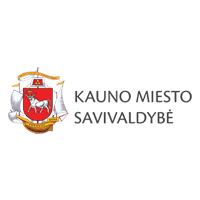Exhibition “Europe on the Operation Table: World War I in the Cartoons of Louis Raemaekers” serves as a continuation of the exhibition “Tango with Death”. In the first part we got familiarized with the current issues of the Western Front, the faces of death and the weapons of war. The second part will show not only the schemes of the key figures but also the events taking place in the East, the secret deals being elaborated while the end of the war was approaching, the predictions of victory and the implacable loss. Also you will be able to compare the Western and Lithuanian styles of war propaganda and news presentation.
Dutch cartoonist Louis Raemaekers was well aware of the power of the visual propaganda of war. He was also a virtual war correspondent as if from the location of the event reporting the atrocities of the frontline, the latest weapons of the enemy and the consequences of their employment. He was a visionary as well – with his cartoons he was depicting the future, the inevitable weakening of the enemy and his peril provided the “right” side is united when stepping into the battlefield. As a secret agent, the painter depicted a highly expressive face of the enemy and outlined his assistants – death, famine and the grim reaper also foregrounding secret deals and war crimes. With a huge dose of sarcasm he commemorated “the first birthday of the refreshingly merry war” and “celebrated” Christmas in the Christmas crib turned into a bunker. Both sides of the war were representing their nations as heroes whereas the enemy was visualized as demons. Only the symbols differed – the ones evoking the strongest sentiments of the nation were selected. Thus, for example, Germans were defending the Kultur and the empire while the French were standing firm for the liberty of the Republic and for Marianne, the goddess symbolizing democracy whereas the countries of the Entente were rescuing the collapsing civilization from the German militarism. Thus war propaganda reached its peak during World War I as it evolved into an ever more powerful weapon demonstrating not just the ‘true’ reality of the war but rather insistently offering the ‘right’ attitude towards the reality.
During World War I, Lithuania found itself between two fires. Across Lithuania, the Russian and German armies marched destroying and marauding whatever they found in their way. Lithuania was occupied by Germans, and Lithuanians were forced to fight and die on both sides. Yet, despite the loss of residents and material resources, the consequences of the war provided preconditions for the restoration of the independence of Lithuania.
As well as in other war-affected countries, stories and experiences of war started featuring urban legends and got to serve various interests of the ‘country under construction’; sometimes these stories would turn into propaganda against the ‘unfriendly country’. Jaroslavas Rimkus, a pedagogue, amateur singer, ethnographer and publicist who took the pen-name of J. Šilietis, bequeathed us a substantial collection of cartoons visualizing the sufferings of Lithuanians in the war; this collection was published in the edition Vokiečių okupacija Lietuvoje 1915–1919 m. (German Occupation of Lithuania, 1915-1919). His cartoons are like a lively chronicle: there, the enemy is looting the country, soldiers are perishing in trenches, innocent civilians are being oppressed and robbed in villages and towns. This set based on the human memory is considered to be not only a masterpiece of political propaganda but also the first Lithuanian cartoon. The images created by J. Šilietis weave a harmonious story which is occasionally supplemented (akin to the works of the famous Louis Raemaekers) with brief and usually ironic remarks.



















